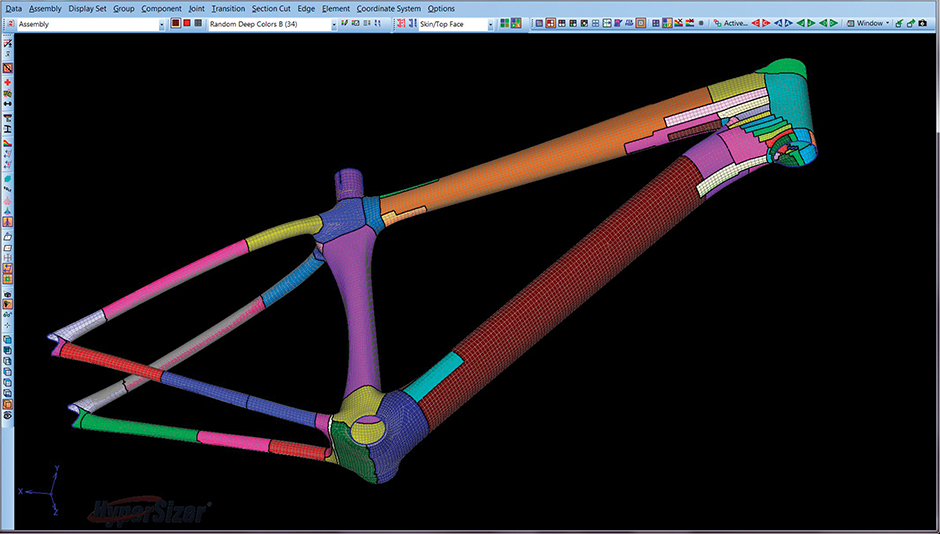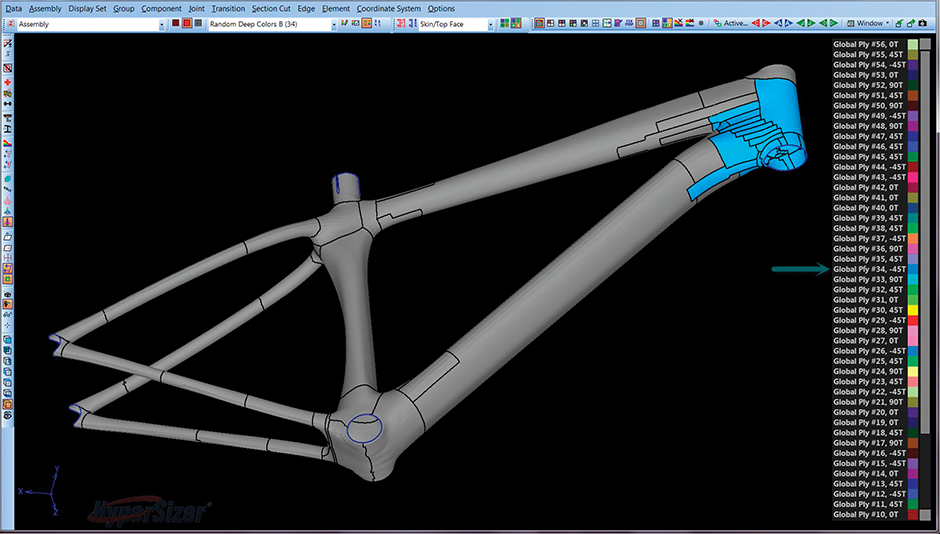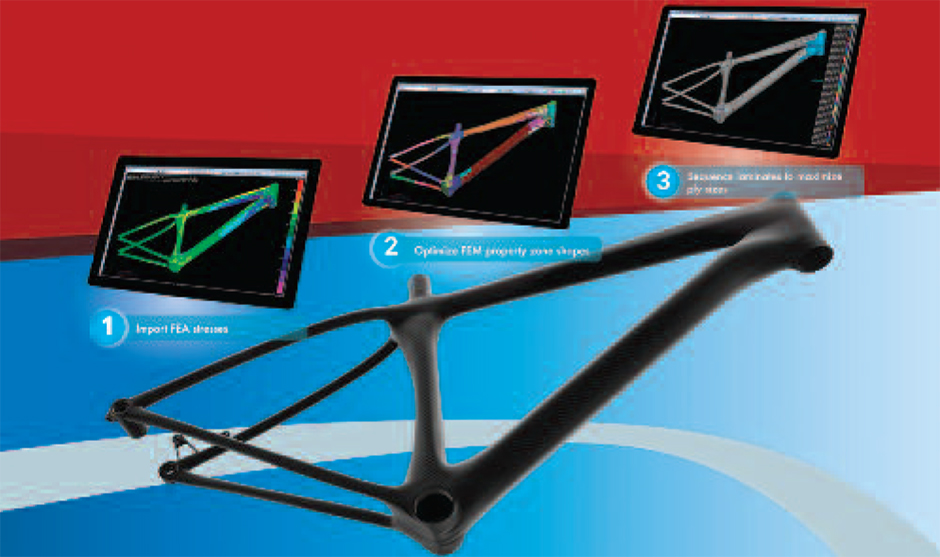The Sporting Life
Polymers and composites are enhancing athletes’ performances and making sporting events safer for them—as well as for the fans
Previous Article Next Article
By Mike Tolinski
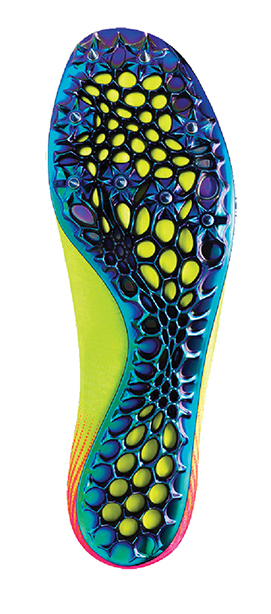
Top-level athletes push themselves hard and are natural risk-takers. Sometimes they push themselves too hard in order to win. At those times, often the only physical barriers protecting them from injury are various kinds of polymeric materials—in their clothing, protective gear, or the playing surface itself.
These protective elements are becoming more important in and integrated with sports. In the extreme case of a new weapons-based martial arts combat sport in Australia, for example, protective gear is critical to the contest. Called Unified Weapons Master (UWM), the sport has competitors battle each other while wearing protective carbon-fiber composite armor suits with built-in sensors. The sensors calculate the actual damage each weapon strike would have caused the body if it was unprotected. In April, UWM announced a lighter, second-generation version of the composite armor, allowing more realistic combat (though still using blunt-edge weapons).
But this article will focus on more conventional sports involving millions of athletes (and spectators).
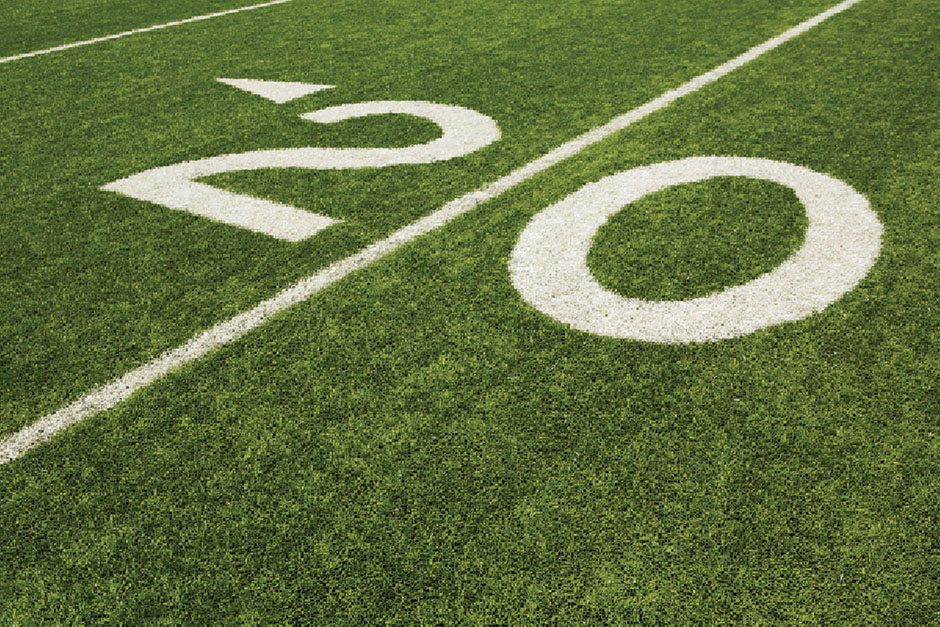
The global artificial turf market is expanding rapidly, especially in regions with diverse climate conditions.
Softer Helmets for Harder Impacts
Violent impacts are also inherent in North American football, where the focus is on protection—especially from serious injuries like concussions. Designing better helmets is an obvious response to growing concussion concerns, and research over the past few years has focused on using new materials and helmet structures as alternatives to the traditional polycarbonate shell/foam padding design.
One approach is to focus on making the shell more impact-resistant. In 2014, Clemson University, Innegra Technologies, and B&W Fibers started looking at using composites-reinforced “hybrid yarns” of carbon fiber and other, toughening Innegra fibers.
“A majority of the improvements in head protection have focused on padding or adjustments to the shape of the helmet, but few, if any, changes have been made to the materials used in the shell of the helmet,” explained John DesJardins, Clemson assistant professor in bioengineering. Innegra-based composites had already been used in hockey sticks, whitewater kayaks, and other high-impact applications.
Another approach has been simply to add padding over the conventional helmet shell to absorb impacts. One product of this type is the polyurethane Guardian Cap, developed by the Hanson Group. It’s placed on top of a regular helmet, adding a layer of padding to the outside surface. Thus, each impact is less concentrated and harmful than if it were concentrated on a single point of a hard helmet.
This addition to protective headgear has been proven to reduce the impact of blows by up to 33%, according to a figure cited by the American Chemistry Council. Tens of thousands of athletes in small college, youth, and high school football programs have used the Guardian Cap over its five-year history, the manufacturer Guardian Innovations reports.

As it did at the London 2012 Games, a turf from Polytan STIn based on PE, PP, and PU materials from Dow Chemical Co. will cover the playing surface for field hockey competitions.
A recent, award-winning idea combines these two concepts, and adds another. Last December, the University of Washington and helmet-development specialist Vicis won the Head Health Challenge II grant to develop their Zero1 football helmet concept (the award is sponsored by the National Football League, General Electric and Under Armour).
The design has a seemingly conventional shell, except that it deforms locally during impact—“like a car bumper,” says Vicis. This allows energy to be transferred to multiple column-shaped elements making up the next layer of the helmet. These flexible elements absorb linear and rotational loads, ultimately mitigating the forces likely to cause concussion, the developers explain. The kinds of polymers used in these structures have not been disclosed by the developers.
Turf Wars
As it becomes more commonly used, artificial turf on football and other playing fields is also getting more impact-absorbing and injury-reducing. Turf is usually composed of layers of polyethylene, polypropylene or polyamide yarns, plus backing and shock padding layers of styrene-butadiene latex or rubber, polyurethane and other elastomers.
A March 2016 AMI Consulting study says that the global artificial turf market is expanding rapidly. Turf is useful especially in regions where climatic conditions “are challenging,” for example, “because there is too much or too little rain, or because heat or freezing temperatures cause the ground to be too hard,” notes AMI. Other pluses are its low maintenance, durability, and ability to match the performance of natural turf and the standards of major sports governing bodies.
“The selection of the components to be included in the artificial turf system and the materials to be used, particularly for sports installations, is a key issue facing the industry today,” AMI notes. Moreover, it’s a mature technology, meaning that many original artificial turf systems are now at the end of their lives. “Replacing old turf as it reaches its end-of-life is providing strong demand for new artificial turf, but the industry also has to manage the re-use, recycling or disposal of the increasing volumes of turf that needs replacing.”
At the same time, the newest synthetic turf is getting safer for athletes. For example, another winner of the Head Health Challenge II was Viconic Sporting, developer of a turf underlayer that’s designed for impact management. The product is a formed thermoplastic “that fully recovers to its original shape after impact,” the company says. (Viconic’s parent company supplies similar materials are for the automotive industry and U.S. military vehicles.)
Outside of American football, artificial turf will be on display at the Rio 2016 Olympic Games. As it did at the London 2012 Games, a turf from Polytan STIn based on PE, PP, and PU materials from Dow Chemical Co. will cover the playing surface for field hockey competitions.
The turf has multiple layers. At the surface is the wear-resistant polymer yarn. “The complete turf system, including embedded shock pad properties, provides stability, durability, shock absorption, and force-reduction properties for the benefit of the players and the game,” says Dow. The turf is also very colorable, allowing players and spectators to see the ball more clearly.
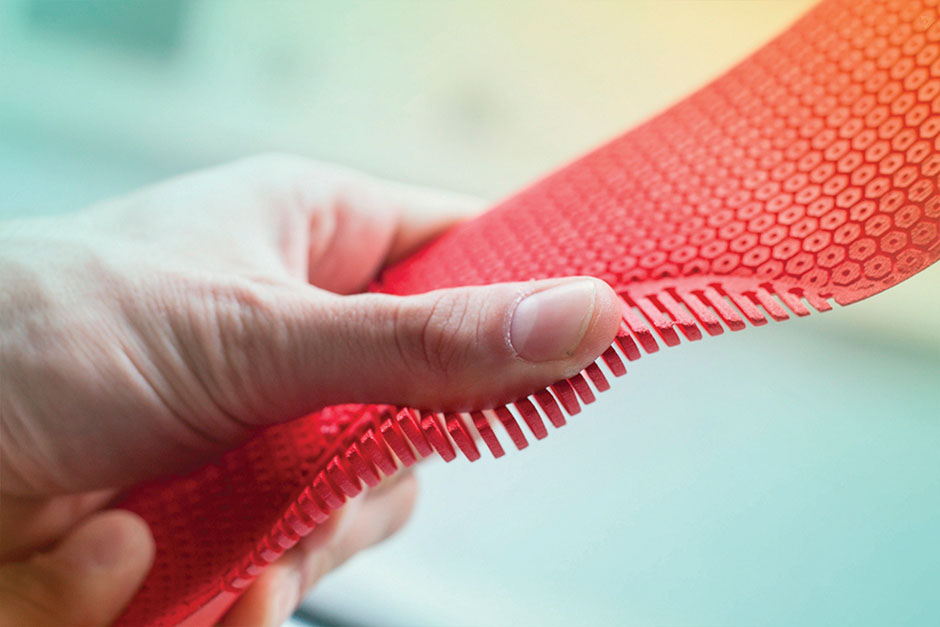
Another winner of the Head Health Challenge II was Viconic Sporting, developer of a turf underlayer that’s designed for impact management.
What About the Fans?
Spectators at sporting events like Rio 2016 are being better protected, too. Rather than the surface under the feet, fans will benefit from durable plastics in their seats Brazil. Engineering plastics supplier RadiciGroup supplied Radiflam S flame-retardant polyamide-6 materials for five venues at the Games.
The 30% glass-fiber PA-6 reportedly was used to manufacture the stadium seats and many of their components and accessories (such as armrests, bolts and supports). The material needs to withstand the rigors of UV radiation and weathering in hot, sunny Brazil, while complying with the Olympic Committee’s “stringent regulations” on the safety of the sport facilities, RadiciGroup says.
But sometimes fans need direct protection from what’s happening on the field. For example, Major League Baseball in the USA over the past couple seasons has been faced with some highly publicized incidents of fans being injured by foul balls or broken bats. Thus there were calls in 2015 for stadiums to extend the coverage of the netting used for spectator protection.
But netting can interfere with fans’ views of the game. So in at least 10 MLB stadiums, “nearly invisible” netting from Promats Athletics is being installed. The product uses Ultra Cross netting manufactured by NET Systems and is made with black fiber from Netherlands-based DSM Dyneema.
The netting made with ultrahigh-molecular-weight PE Dyneema fiber is said to be barely noticeable. “Manufacturing safety netting with what’s considered ‘the world’s strongest fiber’ allows us to preserve the ballpark experience, while offering state-of-the-art protection for spectators,” says Promats Athletics President Wayne Oliver.
Here, the weave of the fiber plays a key role in the net’s invisibility, not just the fiber’s integrated black color. The Ultra Cross is “a knotless braided net,” the manufacturers explain. Other nets use twisted fibers that are joined with knots, making them more obstructive to look through as a screen.

Fan protection — such as the use of nearly-invisible safety netting — is an increasingly important part of stadium design.
Look Up
Transparency is another kind of invisibility, and it’s what’s needed for the roof of the new stadium of the NFL’s Minnesota Vikings. U.S. Bank Stadium reportedly will be the first sports facility in the USA with a transparent roof, made possible by the film Dyneon Fluoroplastic ETFE, a partially fluorinated copolymer of ethylene and tetrafluoroethylene from 3M.
The film is lighter than glass and reportedly more cost-effective than a retractable roof for letting in natural light. The stadium’s 248,000 ft2 (23,000 m2) roof and facade is covered by 75 three-layer ETFE film air-filled “cushions” that allow 95% of daylight to pass through, says 3M.
Importantly, the roof is designed to hold up against Minnesota snowstorms, like the 2010 storm whose snow fall collapsed the roof of the Metrodome, the Vikings’ former home. 3M touts the ETFE film’s tear strength and puncture resistance and its use in northern Europe and the Alps as proof of its resistance to winter storms. Morevoer, the film is smooth enough that the snow will tend to slide off of the roof “in an almost controlled manner,” the company adds.
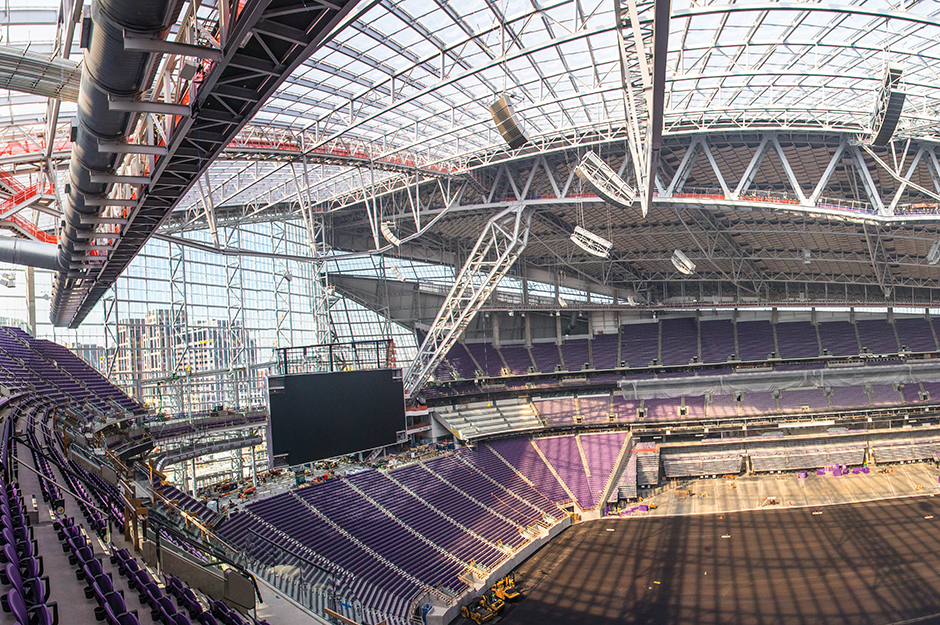
Minnesota Vikings’ new U.S. Bank Stadium will be the first sports facility in the country to have a transparent roof.
The Sporting Life
Polymers and composites are enhancing athletes’ performances and making sporting events safer for them—as well as for the fans
Previous Article Next Article
By Mike Tolinski

Top-level athletes push themselves hard and are natural risk-takers. Sometimes they push themselves too hard in order to win. At those times, often the only physical barriers protecting them from injury are various kinds of polymeric materials—in their clothing, protective gear, or the playing surface itself.
These protective elements are becoming more important in and integrated with sports. In the extreme case of a new weapons-based martial arts combat sport in Australia, for example, protective gear is critical to the contest. Called Unified Weapons Master (UWM), the sport has competitors battle each other while wearing protective carbon-fiber composite armor suits with built-in sensors. The sensors calculate the actual damage each weapon strike would have caused the body if it was unprotected. In April, UWM announced a lighter, second-generation version of the composite armor, allowing more realistic combat (though still using blunt-edge weapons).
But this article will focus on more conventional sports involving millions of athletes (and spectators).

The global artificial turf market is expanding rapidly, especially in regions with diverse climate conditions.
Softer Helmets for Harder Impacts
Violent impacts are also inherent in North American football, where the focus is on protection—especially from serious injuries like concussions. Designing better helmets is an obvious response to growing concussion concerns, and research over the past few years has focused on using new materials and helmet structures as alternatives to the traditional polycarbonate shell/foam padding design.
One approach is to focus on making the shell more impact-resistant. In 2014, Clemson University, Innegra Technologies, and B&W Fibers started looking at using composites-reinforced “hybrid yarns” of carbon fiber and other, toughening Innegra fibers.
“A majority of the improvements in head protection have focused on padding or adjustments to the shape of the helmet, but few, if any, changes have been made to the materials used in the shell of the helmet,” explained John DesJardins, Clemson assistant professor in bioengineering. Innegra-based composites had already been used in hockey sticks, whitewater kayaks, and other high-impact applications.
Another approach has been simply to add padding over the conventional helmet shell to absorb impacts. One product of this type is the polyurethane Guardian Cap, developed by the Hanson Group. It’s placed on top of a regular helmet, adding a layer of padding to the outside surface. Thus, each impact is less concentrated and harmful than if it were concentrated on a single point of a hard helmet.
This addition to protective headgear has been proven to reduce the impact of blows by up to 33%, according to a figure cited by the American Chemistry Council. Tens of thousands of athletes in small college, youth, and high school football programs have used the Guardian Cap over its five-year history, the manufacturer Guardian Innovations reports.

As it did at the London 2012 Games, a turf from Polytan STIn based on PE, PP, and PU materials from Dow Chemical Co. will cover the playing surface for field hockey competitions.
A recent, award-winning idea combines these two concepts, and adds another. Last December, the University of Washington and helmet-development specialist Vicis won the Head Health Challenge II grant to develop their Zero1 football helmet concept (the award is sponsored by the National Football League, General Electric and Under Armour).
The design has a seemingly conventional shell, except that it deforms locally during impact—“like a car bumper,” says Vicis. This allows energy to be transferred to multiple column-shaped elements making up the next layer of the helmet. These flexible elements absorb linear and rotational loads, ultimately mitigating the forces likely to cause concussion, the developers explain. The kinds of polymers used in these structures have not been disclosed by the developers.
Turf Wars
As it becomes more commonly used, artificial turf on football and other playing fields is also getting more impact-absorbing and injury-reducing. Turf is usually composed of layers of polyethylene, polypropylene or polyamide yarns, plus backing and shock padding layers of styrene-butadiene latex or rubber, polyurethane and other elastomers.
A March 2016 AMI Consulting study says that the global artificial turf market is expanding rapidly. Turf is useful especially in regions where climatic conditions “are challenging,” for example, “because there is too much or too little rain, or because heat or freezing temperatures cause the ground to be too hard,” notes AMI. Other pluses are its low maintenance, durability, and ability to match the performance of natural turf and the standards of major sports governing bodies.
“The selection of the components to be included in the artificial turf system and the materials to be used, particularly for sports installations, is a key issue facing the industry today,” AMI notes. Moreover, it’s a mature technology, meaning that many original artificial turf systems are now at the end of their lives. “Replacing old turf as it reaches its end-of-life is providing strong demand for new artificial turf, but the industry also has to manage the re-use, recycling or disposal of the increasing volumes of turf that needs replacing.”
At the same time, the newest synthetic turf is getting safer for athletes. For example, another winner of the Head Health Challenge II was Viconic Sporting, developer of a turf underlayer that’s designed for impact management. The product is a formed thermoplastic “that fully recovers to its original shape after impact,” the company says. (Viconic’s parent company supplies similar materials are for the automotive industry and U.S. military vehicles.)
Outside of American football, artificial turf will be on display at the Rio 2016 Olympic Games. As it did at the London 2012 Games, a turf from Polytan STIn based on PE, PP, and PU materials from Dow Chemical Co. will cover the playing surface for field hockey competitions.
The turf has multiple layers. At the surface is the wear-resistant polymer yarn. “The complete turf system, including embedded shock pad properties, provides stability, durability, shock absorption, and force-reduction properties for the benefit of the players and the game,” says Dow. The turf is also very colorable, allowing players and spectators to see the ball more clearly.

Another winner of the Head Health Challenge II was Viconic Sporting, developer of a turf underlayer that’s designed for impact management.
What About the Fans?
Spectators at sporting events like Rio 2016 are being better protected, too. Rather than the surface under the feet, fans will benefit from durable plastics in their seats Brazil. Engineering plastics supplier RadiciGroup supplied Radiflam S flame-retardant polyamide-6 materials for five venues at the Games.
The 30% glass-fiber PA-6 reportedly was used to manufacture the stadium seats and many of their components and accessories (such as armrests, bolts and supports). The material needs to withstand the rigors of UV radiation and weathering in hot, sunny Brazil, while complying with the Olympic Committee’s “stringent regulations” on the safety of the sport facilities, RadiciGroup says.
But sometimes fans need direct protection from what’s happening on the field. For example, Major League Baseball in the USA over the past couple seasons has been faced with some highly publicized incidents of fans being injured by foul balls or broken bats. Thus there were calls in 2015 for stadiums to extend the coverage of the netting used for spectator protection.
But netting can interfere with fans’ views of the game. So in at least 10 MLB stadiums, “nearly invisible” netting from Promats Athletics is being installed. The product uses Ultra Cross netting manufactured by NET Systems and is made with black fiber from Netherlands-based DSM Dyneema.
The netting made with ultrahigh-molecular-weight PE Dyneema fiber is said to be barely noticeable. “Manufacturing safety netting with what’s considered ‘the world’s strongest fiber’ allows us to preserve the ballpark experience, while offering state-of-the-art protection for spectators,” says Promats Athletics President Wayne Oliver.
Here, the weave of the fiber plays a key role in the net’s invisibility, not just the fiber’s integrated black color. The Ultra Cross is “a knotless braided net,” the manufacturers explain. Other nets use twisted fibers that are joined with knots, making them more obstructive to look through as a screen.

Fan protection — such as the use of nearly-invisible safety netting — is an increasingly important part of stadium design.
Look Up
Transparency is another kind of invisibility, and it’s what’s needed for the roof of the new stadium of the NFL’s Minnesota Vikings. U.S. Bank Stadium reportedly will be the first sports facility in the USA with a transparent roof, made possible by the film Dyneon Fluoroplastic ETFE, a partially fluorinated copolymer of ethylene and tetrafluoroethylene from 3M.
The film is lighter than glass and reportedly more cost-effective than a retractable roof for letting in natural light. The stadium’s 248,000 ft2 (23,000 m2) roof and facade is covered by 75 three-layer ETFE film air-filled “cushions” that allow 95% of daylight to pass through, says 3M.
Importantly, the roof is designed to hold up against Minnesota snowstorms, like the 2010 storm whose snow fall collapsed the roof of the Metrodome, the Vikings’ former home. 3M touts the ETFE film’s tear strength and puncture resistance and its use in northern Europe and the Alps as proof of its resistance to winter storms. Morevoer, the film is smooth enough that the snow will tend to slide off of the roof “in an almost controlled manner,” the company adds.

Minnesota Vikings’ new U.S. Bank Stadium will be the first sports facility in the country to have a transparent roof.
The Sporting Life
Polymers and composites are enhancing athletes’ performances and making sporting events safer for them—as well as for the fans
Previous Article Next Article
By Mike Tolinski

Top-level athletes push themselves hard and are natural risk-takers. Sometimes they push themselves too hard in order to win. At those times, often the only physical barriers protecting them from injury are various kinds of polymeric materials—in their clothing, protective gear, or the playing surface itself.
These protective elements are becoming more important in and integrated with sports. In the extreme case of a new weapons-based martial arts combat sport in Australia, for example, protective gear is critical to the contest. Called Unified Weapons Master (UWM), the sport has competitors battle each other while wearing protective carbon-fiber composite armor suits with built-in sensors. The sensors calculate the actual damage each weapon strike would have caused the body if it was unprotected. In April, UWM announced a lighter, second-generation version of the composite armor, allowing more realistic combat (though still using blunt-edge weapons).
But this article will focus on more conventional sports involving millions of athletes (and spectators).

The global artificial turf market is expanding rapidly, especially in regions with diverse climate conditions.
Softer Helmets for Harder Impacts
Violent impacts are also inherent in North American football, where the focus is on protection—especially from serious injuries like concussions. Designing better helmets is an obvious response to growing concussion concerns, and research over the past few years has focused on using new materials and helmet structures as alternatives to the traditional polycarbonate shell/foam padding design.
One approach is to focus on making the shell more impact-resistant. In 2014, Clemson University, Innegra Technologies, and B&W Fibers started looking at using composites-reinforced “hybrid yarns” of carbon fiber and other, toughening Innegra fibers.
“A majority of the improvements in head protection have focused on padding or adjustments to the shape of the helmet, but few, if any, changes have been made to the materials used in the shell of the helmet,” explained John DesJardins, Clemson assistant professor in bioengineering. Innegra-based composites had already been used in hockey sticks, whitewater kayaks, and other high-impact applications.
Another approach has been simply to add padding over the conventional helmet shell to absorb impacts. One product of this type is the polyurethane Guardian Cap, developed by the Hanson Group. It’s placed on top of a regular helmet, adding a layer of padding to the outside surface. Thus, each impact is less concentrated and harmful than if it were concentrated on a single point of a hard helmet.
This addition to protective headgear has been proven to reduce the impact of blows by up to 33%, according to a figure cited by the American Chemistry Council. Tens of thousands of athletes in small college, youth, and high school football programs have used the Guardian Cap over its five-year history, the manufacturer Guardian Innovations reports.

As it did at the London 2012 Games, a turf from Polytan STIn based on PE, PP, and PU materials from Dow Chemical Co. will cover the playing surface for field hockey competitions.
A recent, award-winning idea combines these two concepts, and adds another. Last December, the University of Washington and helmet-development specialist Vicis won the Head Health Challenge II grant to develop their Zero1 football helmet concept (the award is sponsored by the National Football League, General Electric and Under Armour).
The design has a seemingly conventional shell, except that it deforms locally during impact—“like a car bumper,” says Vicis. This allows energy to be transferred to multiple column-shaped elements making up the next layer of the helmet. These flexible elements absorb linear and rotational loads, ultimately mitigating the forces likely to cause concussion, the developers explain. The kinds of polymers used in these structures have not been disclosed by the developers.
Turf Wars
As it becomes more commonly used, artificial turf on football and other playing fields is also getting more impact-absorbing and injury-reducing. Turf is usually composed of layers of polyethylene, polypropylene or polyamide yarns, plus backing and shock padding layers of styrene-butadiene latex or rubber, polyurethane and other elastomers.
A March 2016 AMI Consulting study says that the global artificial turf market is expanding rapidly. Turf is useful especially in regions where climatic conditions “are challenging,” for example, “because there is too much or too little rain, or because heat or freezing temperatures cause the ground to be too hard,” notes AMI. Other pluses are its low maintenance, durability, and ability to match the performance of natural turf and the standards of major sports governing bodies.
“The selection of the components to be included in the artificial turf system and the materials to be used, particularly for sports installations, is a key issue facing the industry today,” AMI notes. Moreover, it’s a mature technology, meaning that many original artificial turf systems are now at the end of their lives. “Replacing old turf as it reaches its end-of-life is providing strong demand for new artificial turf, but the industry also has to manage the re-use, recycling or disposal of the increasing volumes of turf that needs replacing.”
At the same time, the newest synthetic turf is getting safer for athletes. For example, another winner of the Head Health Challenge II was Viconic Sporting, developer of a turf underlayer that’s designed for impact management. The product is a formed thermoplastic “that fully recovers to its original shape after impact,” the company says. (Viconic’s parent company supplies similar materials are for the automotive industry and U.S. military vehicles.)
Outside of American football, artificial turf will be on display at the Rio 2016 Olympic Games. As it did at the London 2012 Games, a turf from Polytan STIn based on PE, PP, and PU materials from Dow Chemical Co. will cover the playing surface for field hockey competitions.
The turf has multiple layers. At the surface is the wear-resistant polymer yarn. “The complete turf system, including embedded shock pad properties, provides stability, durability, shock absorption, and force-reduction properties for the benefit of the players and the game,” says Dow. The turf is also very colorable, allowing players and spectators to see the ball more clearly.

Another winner of the Head Health Challenge II was Viconic Sporting, developer of a turf underlayer that’s designed for impact management.
What About the Fans?
Spectators at sporting events like Rio 2016 are being better protected, too. Rather than the surface under the feet, fans will benefit from durable plastics in their seats Brazil. Engineering plastics supplier RadiciGroup supplied Radiflam S flame-retardant polyamide-6 materials for five venues at the Games.
The 30% glass-fiber PA-6 reportedly was used to manufacture the stadium seats and many of their components and accessories (such as armrests, bolts and supports). The material needs to withstand the rigors of UV radiation and weathering in hot, sunny Brazil, while complying with the Olympic Committee’s “stringent regulations” on the safety of the sport facilities, RadiciGroup says.
But sometimes fans need direct protection from what’s happening on the field. For example, Major League Baseball in the USA over the past couple seasons has been faced with some highly publicized incidents of fans being injured by foul balls or broken bats. Thus there were calls in 2015 for stadiums to extend the coverage of the netting used for spectator protection.
But netting can interfere with fans’ views of the game. So in at least 10 MLB stadiums, “nearly invisible” netting from Promats Athletics is being installed. The product uses Ultra Cross netting manufactured by NET Systems and is made with black fiber from Netherlands-based DSM Dyneema.
The netting made with ultrahigh-molecular-weight PE Dyneema fiber is said to be barely noticeable. “Manufacturing safety netting with what’s considered ‘the world’s strongest fiber’ allows us to preserve the ballpark experience, while offering state-of-the-art protection for spectators,” says Promats Athletics President Wayne Oliver.
Here, the weave of the fiber plays a key role in the net’s invisibility, not just the fiber’s integrated black color. The Ultra Cross is “a knotless braided net,” the manufacturers explain. Other nets use twisted fibers that are joined with knots, making them more obstructive to look through as a screen.

Fan protection — such as the use of nearly-invisible safety netting — is an increasingly important part of stadium design.
Look Up
Transparency is another kind of invisibility, and it’s what’s needed for the roof of the new stadium of the NFL’s Minnesota Vikings. U.S. Bank Stadium reportedly will be the first sports facility in the USA with a transparent roof, made possible by the film Dyneon Fluoroplastic ETFE, a partially fluorinated copolymer of ethylene and tetrafluoroethylene from 3M.
The film is lighter than glass and reportedly more cost-effective than a retractable roof for letting in natural light. The stadium’s 248,000 ft2 (23,000 m2) roof and facade is covered by 75 three-layer ETFE film air-filled “cushions” that allow 95% of daylight to pass through, says 3M.
Importantly, the roof is designed to hold up against Minnesota snowstorms, like the 2010 storm whose snow fall collapsed the roof of the Metrodome, the Vikings’ former home. 3M touts the ETFE film’s tear strength and puncture resistance and its use in northern Europe and the Alps as proof of its resistance to winter storms. Morevoer, the film is smooth enough that the snow will tend to slide off of the roof “in an almost controlled manner,” the company adds.

Minnesota Vikings’ new U.S. Bank Stadium will be the first sports facility in the country to have a transparent roof.

